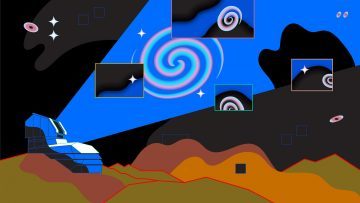Nathan Collins in Symmetry:
 In just a few years, scientists at Vera C. Rubin Observatory in Chile will launch the Legacy Survey of Space and Time (LSST), using the world’s biggest digital camera for ground-based astronomy to take the most detailed pictures of the night sky ever made. When they do, two of the most important things they’ll look for are dark matter and dark energy, the mysterious, invisible substances that make up about 95% of our universe.
In just a few years, scientists at Vera C. Rubin Observatory in Chile will launch the Legacy Survey of Space and Time (LSST), using the world’s biggest digital camera for ground-based astronomy to take the most detailed pictures of the night sky ever made. When they do, two of the most important things they’ll look for are dark matter and dark energy, the mysterious, invisible substances that make up about 95% of our universe.
But there’s a bit of a paradox here: These substances are invisible, so how are researchers going to find them by looking at a bunch of digital photographs?
The short answer is that they’ll look for patterns—patterns in the structure of galaxies, in the cosmic web that links galaxies together, and in the expansion of the universe. The hope is those patterns will reveal something about how much dark energy and dark matter is out there and how they behave.
More here.
